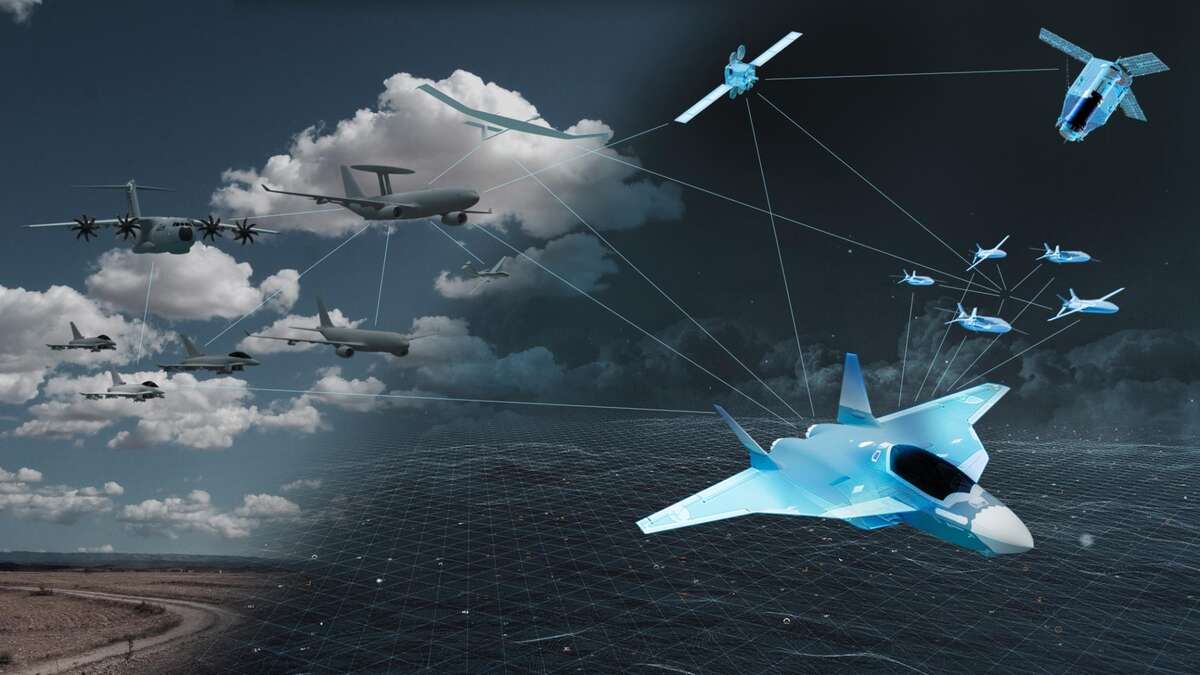The Future of Military Aviation: Beyond Stealth
When we think about the future of military aviation, we often imagine faster planes with advanced stealth capabilities. However, what if I told you that this is no longer enough to ensure air superiority?
In today’s world, it’s not just about being undetectable or having the best aircraft in a dogfight. Technological advancements and the evolving geopolitical landscape have changed the rules of the game. The aircraft of the future will be a critical component within a much more complex technological system, designed to equip armies with greater efficiency and coordination when facing threats.
Introducing FCAS: Revolutionizing European Air Defense
The Future Combat Air System (FCAS) is a collaborative project spearheaded by France, Germany, and Spain, along with major defense companies like Dassault Aviation, Airbus, and Indra. The goal? To develop the next generation of combat air capabilities that will redefine the future of aerial warfare.
But FCAS is more than just a new aircraft. It’s an entire ecosystem of interconnected elements, each playing a crucial role on the battlefield. At its core, FCAS involves the development of a New Generation Fighter (NGF) that incorporates cutting-edge technologies such as stealth, artificial intelligence, and network-centric warfare capabilities.

The heart of FCAS is the New Generation Fighter (NGF), a combat aircraft that represents a significant leap forward in military aviation.
The NGF boasts advanced stealth technology, using materials and designs that minimize its radar signature, making it nearly undetectable. It’s equipped with thrust-vectoring engines, allowing for superior maneuverability and sustained supersonic flight. Inside the cockpit, pilots will have access to the latest technologies, including augmented reality systems and multispectral sensors, providing an unprecedented understanding of the battlefield.
However, the NGF won’t fly alone. It will be supported by advanced drones, known as Remote Carriers, which will carry out a variety of missions, from reconnaissance to electronic warfare. These drones will be equipped with AI algorithms, enabling them to make real-time decisions and adapt to different mission requirements.
Both the NGF and the drones will be interconnected through a real-time communication system, known as the Combat Cloud, ensuring seamless data sharing and coordinated operations.
Technological Innovations: Pushing the Boundaries
FCAS is not just a new fighter jet; it’s a technological revolution. Artificial intelligence and autonomy are at the core of this system, allowing drones and other components to operate independently and make real-time decisions during combat.
The NGF will also be equipped with advanced weaponry, including long-range missiles, directed energy weapons like high-powered lasers, and electronic warfare capabilities to disrupt enemy radar and communication systems. These innovations will provide the aircraft with a comprehensive defense arsenal, ensuring it remains a dominant force on the battlefield.
Development Challenges: Overcoming Obstacles
The development of FCAS is divided into several phases, with the current focus on technology development and refinement. However, the project faces significant challenges, including international coordination, budget management, and technological risks.
Ensuring seamless collaboration between multiple countries and companies is crucial, as is managing budgets to keep the project on track. Additionally, the reliability and security of new technologies must be rigorously tested to avoid potential setbacks.
Integration with Future Combat Systems
FCAS is designed to be part of a larger, automated military communication and action system. This network will enable real-time communication between all system components, including manned aircraft, drones, satellites, and ground command centers. It will play a key role in NATO’s Multi-Domain Combat project, which represents the future of military operations.
The Future Impact of FCAS: A New Era in Aerial Warfare
The Future Combat Air System (FCAS) is more than just an aircraft; it’s a comprehensive ecosystem designed to enhance the effectiveness and efficiency of aerial operations. In an era of increasingly unpredictable battle scenarios, adaptability is crucial. Recent conflicts have highlighted the need for armed forces to swiftly adjust to diverse situations, using technology to drive more efficient operations.
FCAS is set to be a game-changer in modern warfare, integrating advanced technologies like AI, directed energy weapons, and electronic warfare capabilities. It also fosters collaborative defense efforts among European nations, strengthening their collective response to global threats.
In essence, FCAS represents the pinnacle of innovation and collaboration in military aviation, ensuring not only air superiority but also operational excellence in the battlefields of the future.
Stay tuned to our YouTube video for a deeper dive into how FCAS will redefine aerial combat. What excites you most about this cutting-edge system? Let us know in the comments!
Don’t miss the full breakdown—watch our in-depth video on YouTube for more insights!

